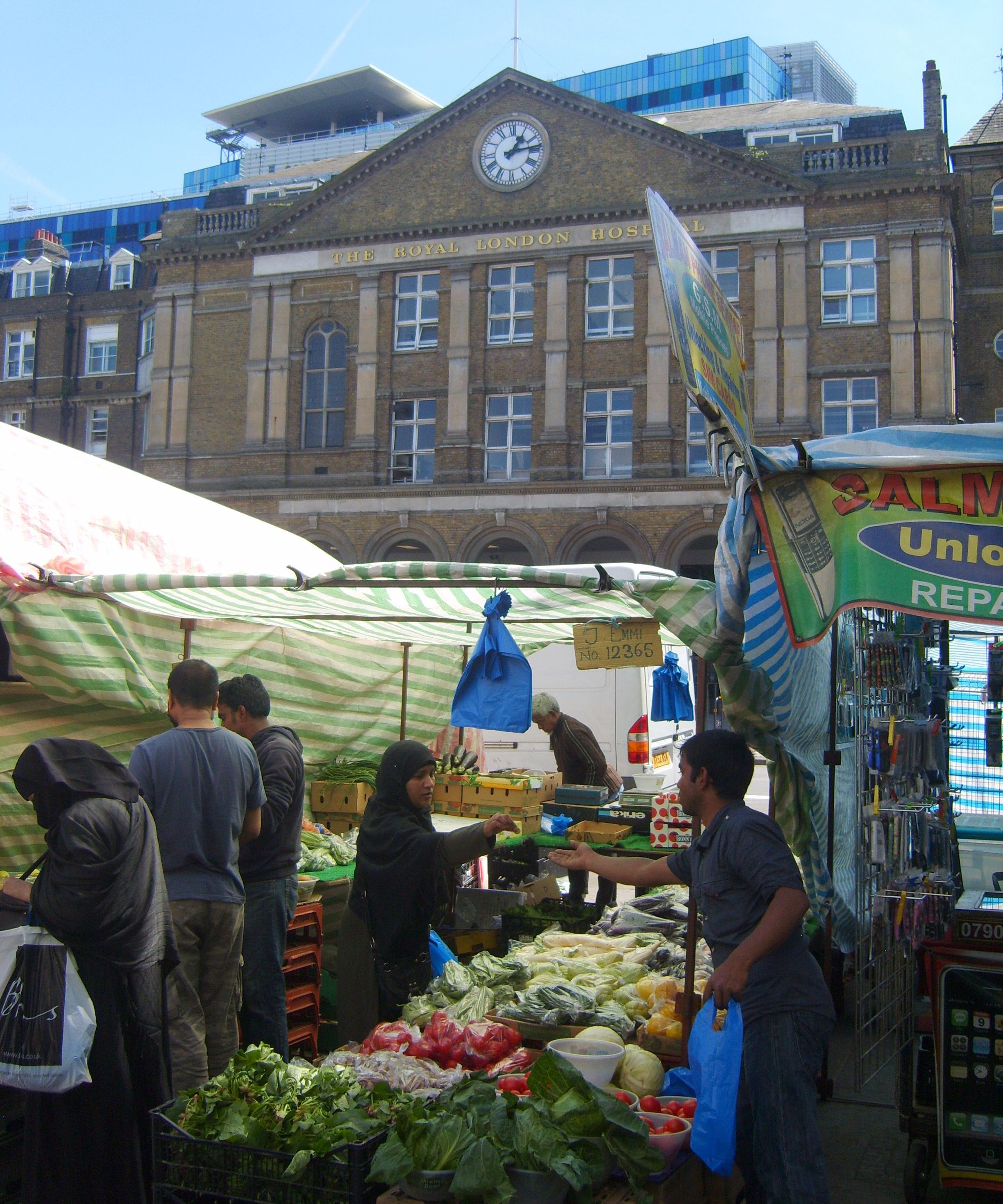
East Whitechapel
This neighbourhood area is set in east Whitechapel. It is home to a few large institutions which dominate its landscape, such as the Royal London Hospital, Barts, the London School of Medicine and Dentistry to the north, the Bigland Green Primary School, and the Mulberry School for Girls just south of Commercial Road. To the south is Shadwell railway station, which is on the East London line on the London Overground – which despite its name, is actually underground in this area. The DLR bisects it perpendicularly, defining the southern border. There are currently plans to merge these two stations into one larger station, improving accessibility and making changing between lines easier.
To the east is Watney Market, in between two post-war residential blocks that make an appearance in a few places throughout the area, with the rest of the area is primarily consisting of Victorian and Georgian terraces. Most of the area’s many businesses, particularly on Commercial Road and Whitechapel Road, remain determinedly ungentrified. Yet, like many areas of East London, this is changing fast. Being in close proximity to the East London Mosque, there are also several Islamic institutions in the area.

Whitechapel is famous for its Victorian past, when narrow, gas-lit streets crisscrossed the large slums of east London, inhabited by the working classes of all of Europe, from Russian, Polish, and German Jews to Irish workmen. Authors such as Charles Dickens brought the area’s poverty into the national conscious, and indeed by the 1880s there was a new form of tourism known as ‘slumming’, where middle to- upper class Victorians would go into the slums, some for the thrill and others for altruistic reasons, some for journalistic purposes, and others for less savoury commercial enterprises. It was around this time that the authorities also decided to get rid of the slums in the area, replacing them with terraced houses and large Peabody Estates. However, due to its proximity to the Docklands, during the Second World War Whitechapel was hit badly by German bombs, and the post-war reconstruction has also left its mark on the area, particularly to the northern part of Whitechapel.
Richard Brandon was buried in the ‘White Chappell’ churchyard, the same that gave Whitechapel its name. He was a hangman, which would typically be a job ridden with guilt, but he was also the hangman of King Charles I, and when he received his payment (30 pounds, a fortune in those days) after the execution of the ex-monarch, he gave the money to his wife, saying that it was the dearest money he had ever earned, because it would cost him his life. He held that guilt all the way to his deathbed.
Author Jack London spent some time in Whitechapel, living there for months as research for his book ‘The People of the Abyss’, published in 1903. He survived by finding shelter in workhouses or on the streets. He was quoted as saying that ‘no other book took so much of (my) young heart and tears as that…’. Whitechapel Road is at the bottom rung of the monopoly board. It costs £4 to rent by itself and a maximum of £450 with a hotel.
The Blind Beggar, an infamous local pub and favourite haunt of the Kray Twins, preserves some of the area’s old character. It is a popular place for tourists to stop after going on the neighbourhood’s daily Jack the Ripper Tours which start at the exit of Aldgate station and walk you through the streets he once terrorised. Just south of the Blind Beggar sits the picturesque Sidney Square, which was the site of the Siege of Sidney Street in 1910. The six hour gun battle between local police and Latvian revolutionaries was the first time the city’s police department requested military assistance to deal with an armed stand-off.
More recently, The Elizabeth Line coming to Whitechapel has benefited this already well-connected area, bringing Heathrow within 35 minutes of the station and Tottenham Court Road within 10 minutes. The new Tower Hamlets Town Hall is also set to be completed later in 2022, using the facade of the old grade II listed Royal London Hospital building. Surrounded by new public squares and civic space, this architectural blend of old and new has cost over 100 million pounds and will provide 300,000 sq ft of office space. Further residential redevelopment has been approved in the form of the New Whitechapel Estate, which will consist of 12 new buildings, two of which will be 23 storey towers.